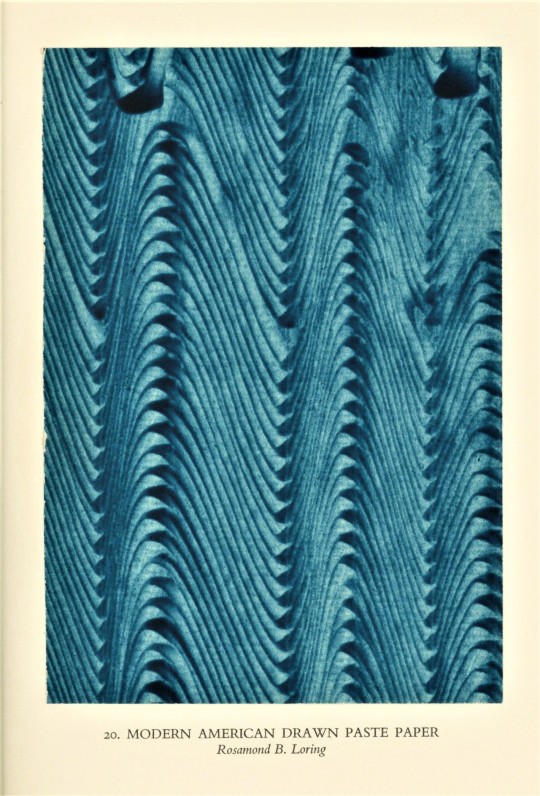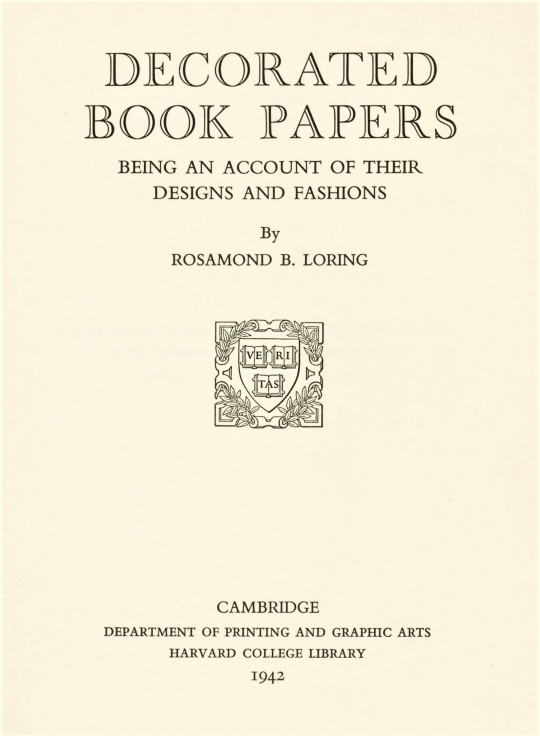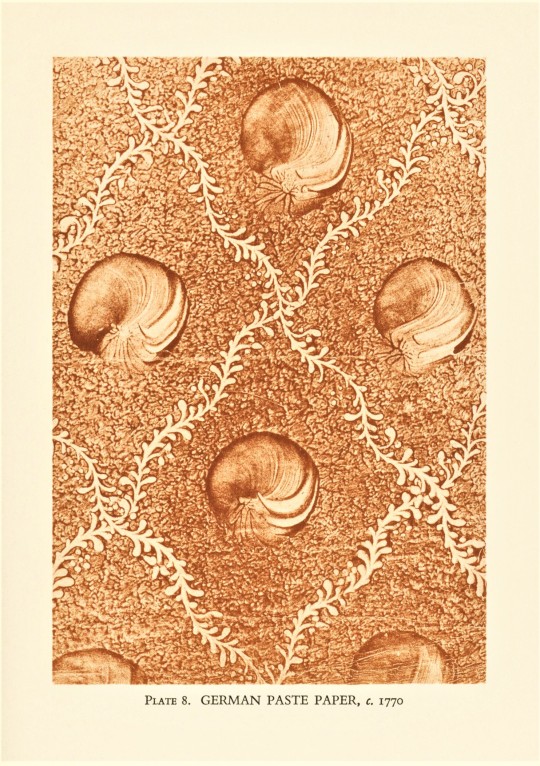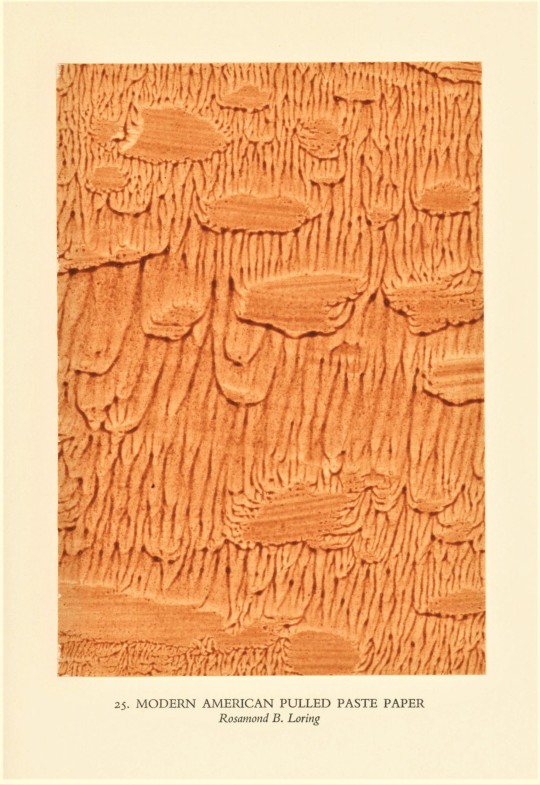#Veronica Ruzicka
Explore tagged Tumblr posts
Photo








Decorative Sunday: Paste Paper Edition
In 1942, Harvard University Press printed 250 copies of Decorated Book Papers: Being an Account of the Designs and Fashions by the bookbinder, author, and creator and collector of decorative papers, Rosamond Bowditch Loring. Published by the Harvard College Library Department of Printing and Graphic Arts in Cambridge, Massachusetts, the 234 sale copies of the first edition sold out within months, despite the “then considerable price of ten dollars” and the economic stressors of the war. In addition to eight plates reproducing examples of 18th century decorative papers, the first edition includes twenty-five samples tipped in, many of which are from the author’s own extensive collection.
While Loring collected a variety of a decorative papers, the examples shown here are from the chapter on paste papers, Loring’s area of creative specialization. The sample papers included in this chapter are all Loring’s own work, or that of her student, Veronica Ruzicka, who bound the first edition (it is worthy to note that Ruzicka is the daughter of illustrator, wood engraver, and type designer Rudolph Ruzicka, whose work we have highlighted several times). Ruzicka also contributed an essay when a second edition of the book was finally published by Harvard University Press in 1952, along with Dard Hunter and Walter Muir Whitehall.
Rosamond Loring (May 2, 1889 – September 17, 1950) studied book binding under Mary Crease Sears at the Sears School of Bookbinding in Boston. Sears, about a decade older than Loring, had had to battle to learn the trade; women were barred from the Bookbinders Union but most commercial binderies were happy to hire women for particular tasks, such as sewing sheets, but maintained a strict separation of roles, preventing employees from learning the whole binding process from start to finish. Eventually, Ms. Sears secured an apprenticeship in France to complete her studies and opened her binding school in Boston shortly after, training several generations of women binders. While studying under Sears, Loring became frustrated with the lack of options for quality endpapers and became determined to make her own, which she sold to other binders at Ms. Sears’s studio. Her first major commercial commission was for the Houghton Mifflin publication of The Antigone of Sophocles, translated by John J. Chapman (Boston, 1930).
Our copy of Decorated Book Papers is a gift of Dick Schoen.
-Olivia Hickner, Special Collections Graduate Intern
#Decorative Sunday#Decorated Book Papers#Rosamund Bowditch Loring#Rosamund Loring#Rose Loring#Paste Paper#Paste Papers#Decorative Paper#End-Paper#Decorative Plates#Decorative Art#Decorative Arts#Veronica Ruzicka#Dard Hunter#Walter Muir Whitehill#John J. Chapman#Harvard University Press#Harvard College Library#Harvard College Library Department of Printing and Graphic Arts#olivia
167 notes
·
View notes